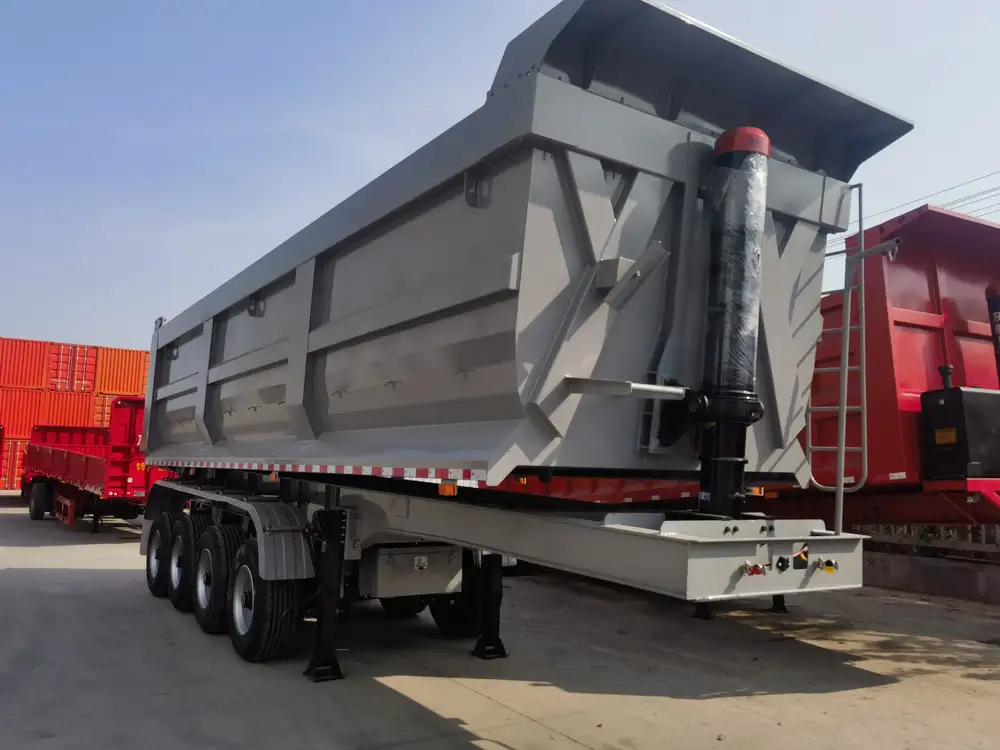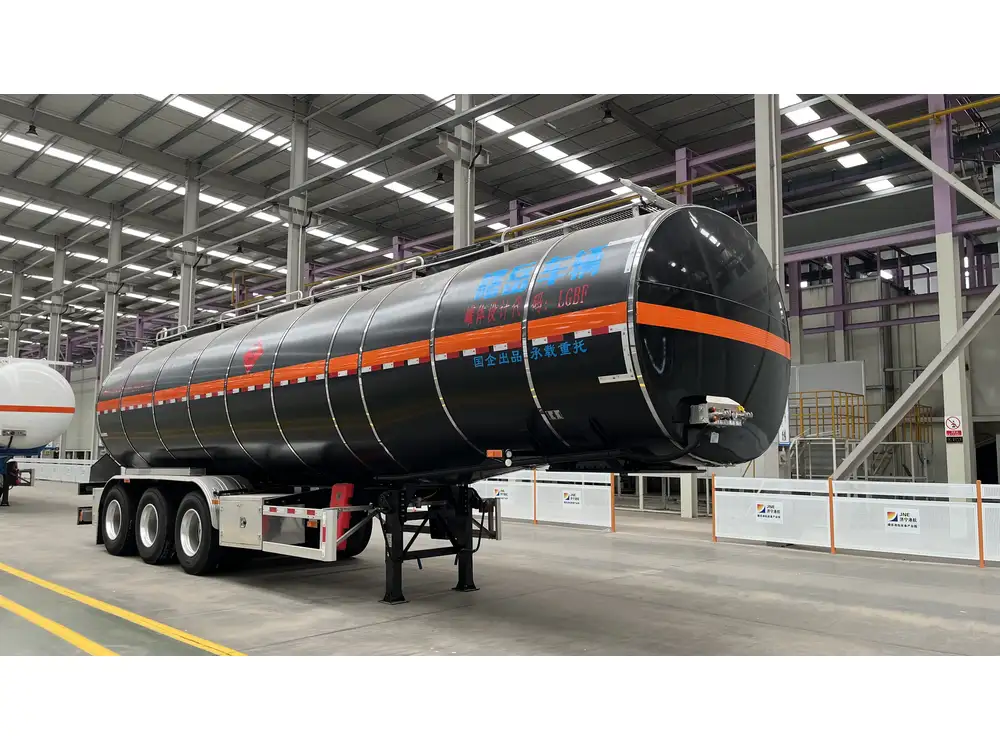The Vehicle Identification Number (VIN) is an essential marker for any vehicle, including flatbed trailers. It serves as a unique code used by mechanical and regulatory authorities to identify a trailer’s specifications, history, and compliance status. For those in the transportation industry or individuals involved in trailer ownership, understanding where to locate the VIN on a flatbed trailer is crucial. This article provides an extensive overview of VIN location, what it signifies, and additional information relevant to flatbed trailers.
Understanding the VIN: Importance and Structure
What is a VIN?
A VIN is a 17-character alphanumeric code assigned to every automotive unit, which includes flatbed trailers. This number contains vital information about the trailer’s manufacturer, model, and year of production. This identification system helps in tracking stolen vehicles, identifying warranties, and performing recalls.

Structure of the VIN
The structure of a VIN is divided into three main sections:
- World Manufacturer Identifier (WMI): The first three characters indicate the manufacturer and country of origin.
- Vehicle Descriptor Section (VDS): Characters four through nine describe the trailer type, brand, and specifications.
- Vehicle Identifier Section (VIS): The last eight characters denote the unique features and production numbers, including year and assembly plant.
Understanding this structure is necessary for decoding the information contained within a VIN.
Locating the VIN on a Flatbed Trailer
Knowing where to find the VIN on a flatbed trailer is essential for registration, insurance, and the potential resale of the trailer. Here are common locations, structured for clarity and ease of use.
1. Front Left Side of the Trailer Frame
The most standard position is on the front left side of the trailer frame, near the axle. This location allows easy access and visibility while still being shielded from damage. Look for a metal plate or a sticker.

2. Near the Hitch
Another commonly used location is next to the hitch. This area is strategically chosen as it is often examined during towing or inspections.
3. Inside the Trailer Coupling Area
For enclosed flatbed trailers, check inside the coupling area. The VIN may be stamped into the frame or a tag placed on the inside wall or structure.
4. On the Driver’s Side Lower Corner
If your flatbed trailer resembles a standard vehicle trailer, sometimes the VIN is located on the driver’s side lower corner of the side panel.

5. On the Registration Documents
While not a physical location, the VIN is documented on the registration papers of the trailer. This is a valuable reference when you cannot physically inspect the trailer.
Factors Affecting VIN Visibility
Wear and Tear
Due to the heavy use of flatbed trailers, factors such as rust, paint, or physical damage may obscure the VIN. It’s advisable to check periodically and ensure that the VIN is readable.

State Regulations
Different states may have specific regulations about VIN placement. Always refer to local mandates, as they may prescribe ways to display or engrave VINs to ensure compliance.
Manufacturer Variations
In some situations, manufacturers may place the VIN in less common spots. Consulting the specific manual for your model can provide additional insights.
How to Read the VIN
To maximize the utility of a VIN, it is beneficial to understand how to read it. Each character in the VIN holds significant information about the trailer:
- First Character: Identifies the country of the manufacturer.
- Second Character: Indicates the manufacturer.
- Third Character: Denotes vehicle type (e.g., flatbed).
- Fourth-Fifth Characters: Describe make and model.
- Sixth Character: Tells the trailer’s gross weight rating.
- Seventh Character: Provides information about the vehicle type.
- Eighth Character: Indicates the restraint system, such as airbag presence.
- Ninth Character: A check digit used to validate the VIN.
- Tenth Character: Indicates the year of manufacture.
- Eleventh Character: Identifies the plant where the trailer was made.
- Twelfth to Seventeenth Characters: Unique serial number.

Legal and Regulatory Considerations
Registration
The VIN is needed for trailer registration in most jurisdictions. Ensure it is visible and properly documented to avoid legal complications.
Insurance
Insurance companies require the VIN for policy generation and claims processing. An accurate VIN helps provide proper coverage for your flatbed trailer, reflecting amendments when modifications occur.

Safety Recalls and Compliance
Regulatory bodies like the National Highway Traffic Safety Administration (NHTSA) use VINs to track and initiate recalls. Ensuring your trailer’s VIN is correctly recorded helps to maintain compliance and ensures safety enhancements are communicated to the owner.
Common Issues Related to VINs and Flatbed Trailers
Obscured and Damaged VINs
Over time, exposure to the elements or impact during use can lead to damage or obscured visibility of a VIN. Regular checks are crucial, especially before a sale or long trip.

Misinterpretation of VIN
Due to various factors, including lack of knowledge or errors, misinterpretation of a VIN often leads to registration issues. Educating oneself on the VIN structure can avoid mismanagement.
Lost Registration Documents
If registration documents containing the VIN are lost, recovering the VIN can be challenging. Vehicle owners should maintain a digital backup of registration documents for quick reference.
Conclusion: Ensuring Vigilance and Compliance
Understanding where the VIN number is located on a flatbed trailer is vital not merely for registration but also for ensuring proper identification in case of theft, resale, or compliance checks. Regularly verifying the visibility and readability of the VIN will serve as a proactive measure against common issues that can arise due to wear or misplacement. By thoroughly comprehending the components of the VIN, regulations regarding its use, and the precautions to take in maintaining compliance, flatbed trailer owners can ensure a more streamlined experience as they navigate the complexities associated with ownership and maintenance. Whether you’re a seasoned manufacturer or a first-time trailer owner, familiarizing yourself with this vital aspect of your vehicle will lead to more informed decisions and better management of your flatbed trailer’s lifecycle.



